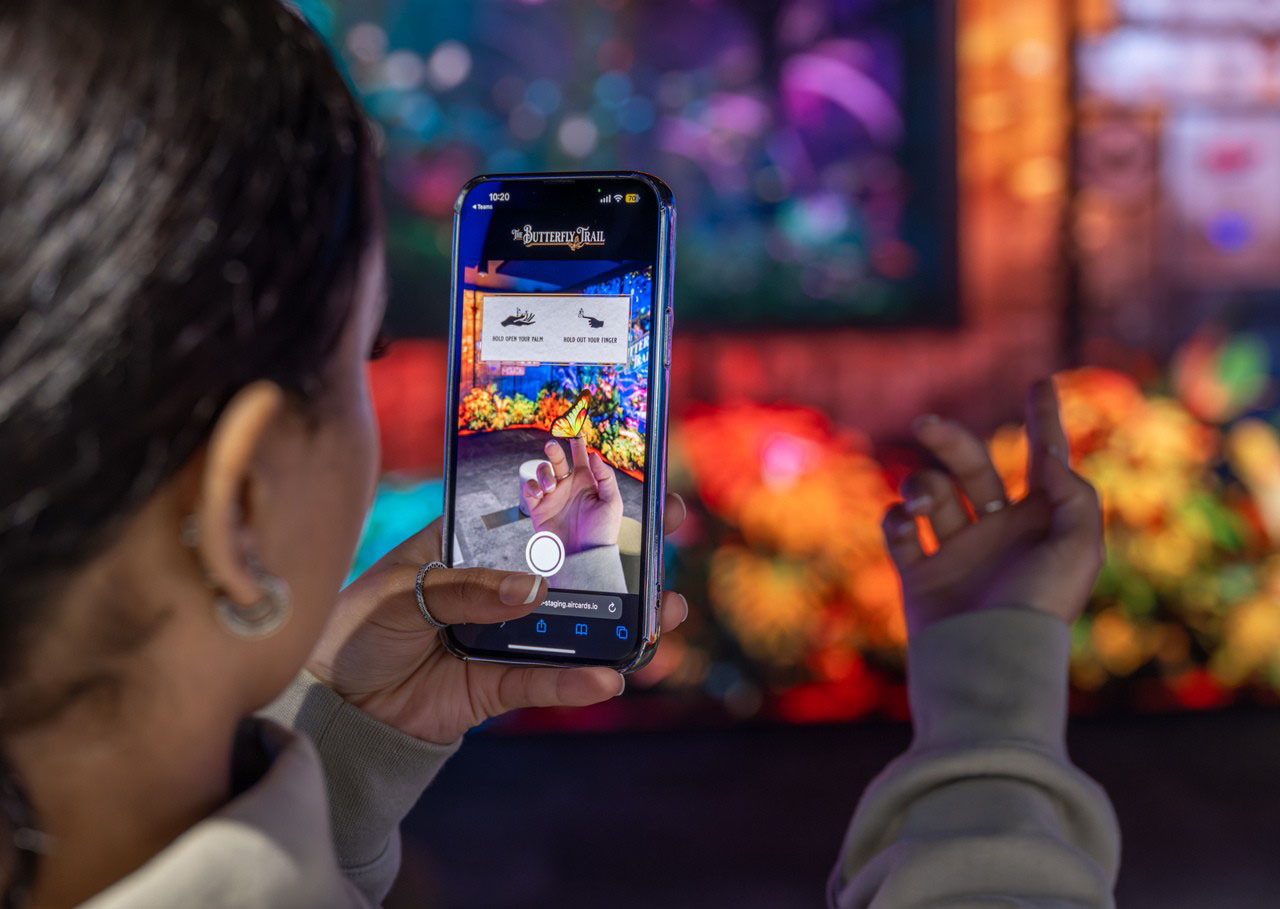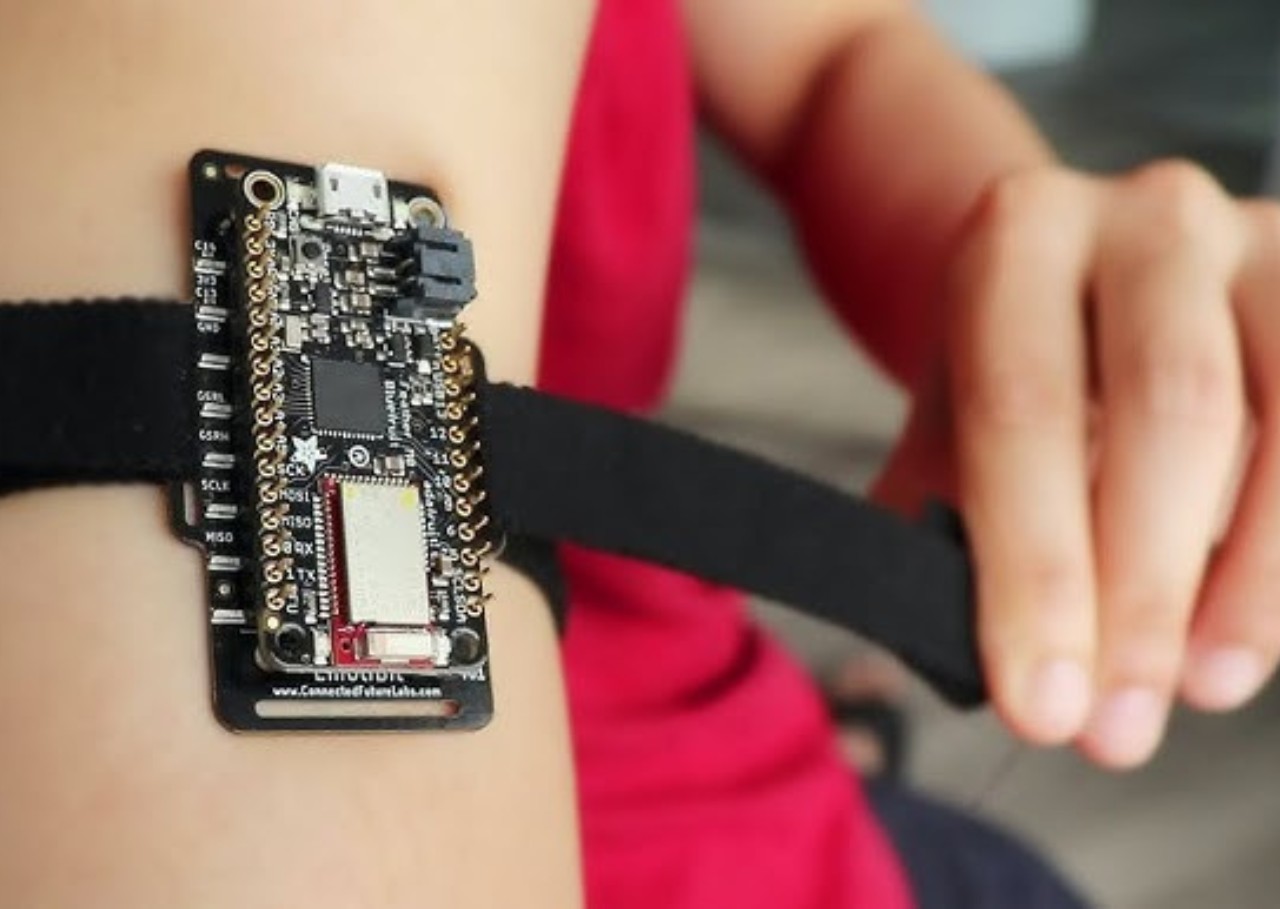Neuroscience Research Findings
Outernet have worked with The Neuro-Narrative Lab; a partnership between branding agency Brand Directors and UCL neuroscientist Professor Daniel Richardson, who champion the use of neuroscience to understand engagement and collective experience - to measure how audiences respond to content in our spaces.

Catch virtual butterflies using a WebAR hand-tracking feature developed by Aircards
Previous work from Professor Richardson has shown that large displays lead to more visual cortex being engaged, more cognitive focus, higher arousal and better memory. This can be seen when comparing a small screen alone to a cinema screen with others, and shows that Outernet offers an additional step up again in terms of a shared, highly immersive experience.
Participants wore an Emotibit sensor and a head-mounted eye-tracker to track their moment-by-moment neuro-physiological response while following their visual journey for immersive experience The Butterfly Trail as well as commercial advertising.

Peaks and troughs in physiological responses correspond to engagement within experiences and show the effect of large-scale immersive environments such as Outernet.
Findings
Participants’ heart rates peaked as they first entered The Now Building and experienced a surge of excitement, with a further peak as they looked across the screens.
The interactivity in the exhibit also drove engagement and produced distinct peaks in neurophysiological signals. When a virtual butterfly landed on the hand of a participant, there was a surge in electrodermal activity, followed by another peak as they took a photo to share on their social channels.
Peaks in physiology continued during the commercial ad that played in-between the exhibition, with continued engagement during the messaging/call to action, before a final peak during footage of a partially clothed model.

